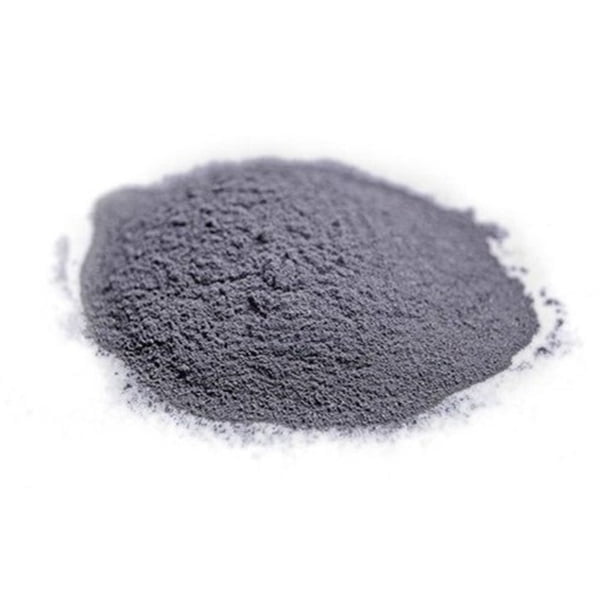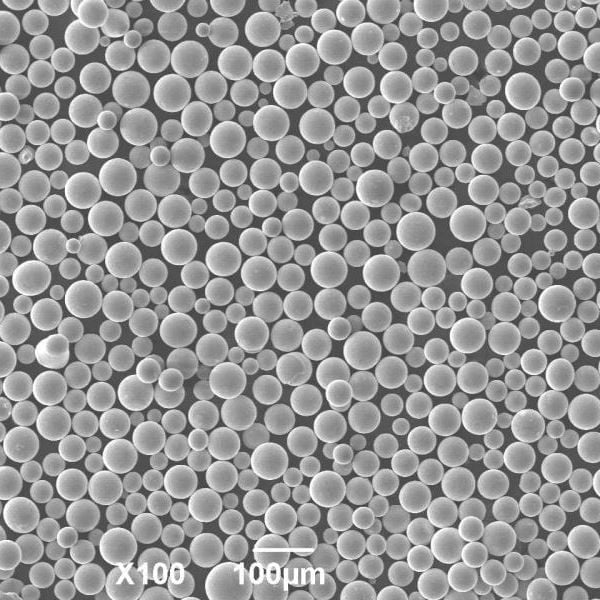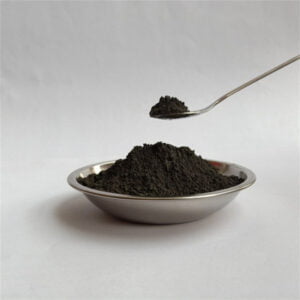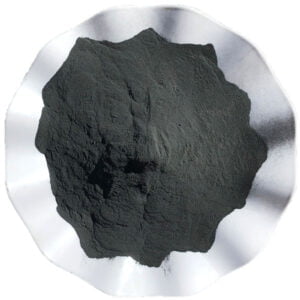Skillnaden mellan SLM-teknik och EBM-teknik
Innehållsförteckning
Additiv tillverkning (AM), även känd som 3D-printing, har revolutionerat vårt sätt att skapa komplexa metallkomponenter. Men inom detta spännande område är det två titaner som sticker ut: Selektiv lasersmältning (SLM) och smältning med elektronstråle (EBM). Båda använder en fusionsteknik med pulverbädd, men deras interna arbete avslöjar fascinerande skillnader. Låt oss dyka in i metallens invecklade dans och reda ut de viktigaste skillnaderna mellan SLM och EBM.
Skillnaden mellan olika värmekällor
Föreställ dig en skicklig skulptör som minutiöst formar lera. I SLM fungerar en högeffektslaser som skulptörens verktyg. Laserstrålen smälter riktade delar av metallpulvret och smälter samman dem lager för lager för att skapa det önskade 3D-objektet.
EBM har ett annat tillvägagångssätt. Här fungerar en koncentrerad elektronstråle som värmekälla. I en vakuumkammare accelereras elektronerna till nära ljusets hastighet, vilket genererar en enorm värme när de träffar metallpulvret. Denna lokaliserade smältning möjliggör exakt formning av objektet.
Tabell: Jämförelse av värmekällor i SLM och EBM
| Funktion | Selektiv lasersmältning (SLM) | Smältning med elektronstråle (EBM) |
|---|---|---|
| Värmekälla | Högpresterande laserstråle | Accelererad elektronstråle |
| Driftsmiljö | Atmosfär med inert gas | Vakuumkammare |
| Smältningsmekanism | Lokaliserad smältning med laser | Lokaliserad smältning genom elektronpåverkan |
Analogi: Tänk på SLM som att använda en fokuserad laserpekare för att smälta specifika områden på chokladbitar och på så sätt skapa en design. EBM, å andra sidan, är som att använda en kraftfull elektronmikroskopstråle för att exakt smälta små punkter på en sockerbit och bygga upp den önskade formen lager för lager.

Skillnaden i formningsmiljö
SLM arbetar i en avskärmad miljö fylld med inert gas, vanligtvis argon eller kväve. På så sätt förhindras oxidation, en skadlig process där metallpulvret reagerar med luftens syre och försvagar slutprodukten.
EBMdäremot trivs i ett fullständigt vakuum. Detta eliminerar risken för oxidation helt och hållet och möjliggör bearbetning av reaktiva metaller som titan, som är mycket känsliga för oxidation i en luftmiljö. Att upprätthålla en vakuumkammare gör dock EBM-processen mer komplicerad och kostsam.
Tabell: Jämförelse av formningsmiljö i SLM och EBM
| Funktion | Selektiv lasersmältning (SLM) | Smältning med elektronstråle (EBM) |
|---|---|---|
| Driftsmiljö | Atmosfär med inert gas (argon, kväve) | Vakuumkammare |
| Risk för oxidering | Måttlig | Minimal |
| Materialkompatibilitet | Brett utbud av metaller | Reaktiva metaller (t.ex. titan) |
Metafor: Tänk dig att bygga ett sandslott på en blåsig strand jämfört med att bygga det i en kontrollerad, vindstilla miljö. SLM är som att bygga på stranden, där vissa sandpartiklar kan blåsa bort av en och annan vindpust. EBM är den kontrollerade miljön som garanterar ett perfekt sandslott varje gång.
Skillnaden i formningsnoggrannhet
Både SLM och EBM har en imponerande detaljrikedom och precision. Det finns dock subtila skillnader. SLM-lasrar kan uppnå finare fokuspunkter jämfört med elektronstrålar. Detta innebär potentiellt skarpare funktioner och tunnare väggar i SLM-utskrivna delar.
EBM erbjuder dock överlägsen bindning mellan skikten tack vare elektronstrålens djupare penetration. Detta resulterar i mycket täta och isotropiska (med samma egenskaper i alla riktningar) delar i EBM, vilket gör dem idealiska för applikationer som kräver hög strukturell integritet.
Tabell: Jämförelse av formningsnoggrannhet i SLM och EBM
| Funktion | Selektiv lasersmältning (SLM) | Smältning med elektronstråle (EBM) |
|---|---|---|
| Skiktets tjocklek | Möjlighet till tunnare skikt | Något tjockare lager |
| Funktion Upplösning | Finare detaljer om funktionen | Överlägsen bindning lager till lager |
| Del Isotropi | Hög | Utmärkt |
Analogi: Tänk på att rita en detaljerad bild med en vass penna (SLM) jämfört med att använda en tjockare pensel (EBM). Pennan ger möjlighet till finare linjer, men penseln skapar en mer enhetlig och solid bild.
Skillnaden i formningshastighet
Snabbhet är en avgörande faktor i alla tillverkningsprocesser. Här tar EBM ledningen. Den höga energitätheten hos elektronstrålen möjliggör snabbare smältning och stelning jämfört med lasern i SLM. Detta leder till snabbare byggtider för EBM, särskilt för större komponenter.
Faktorer som lasereffekt och scanningshastighet kan dock påverka bygghastigheten i SLM. I takt med att tekniken utvecklas minskar SLM:s byggtider ständigt, vilket minskar gapet till EBM.
Tabell: Jämförelse av formningshastighet i SLM och EBM
| Funktion | Selektiv lasersmältning (SLM) | Smältning med elektronstråle (EBM) |
|---|---|---|
| Bygghastighet | Generellt långsammare | Generellt snabbare, särskilt för stora delar |
| Påverkande faktorer | Laserkraft, skanningshastighet | Elektronstrålens energitäthet |
Metafor: Tänk dig att du bygger en legomodell bit för bit. SLM kan vara som att noggrant placera ut varje liten kloss, medan EBM är som att använda en större, färdigmonterad legomodul, vilket avsevärt minskar byggtiden.
Skillnaden i materiell tillämplighet
När det gäller materialval kan både SLM och EBM erbjuder ett brett spektrum av möjligheter. Det finns dock några viktiga skillnader:
- SLM: Ger en bredare kompatibilitet med olika metallpulver, inklusive rostfritt stål, verktygsstål, nickellegeringar, aluminiumlegeringar och till och med vissa ädelmetaller som guld och silver.
- EBM: Utmärker sig särskilt vid bearbetning av reaktiva metaller som titan och dess legeringar, tantal och zirkonium. Dessa metaller är benägna att oxidera i en luftmiljö, vilket gör EBM:s vakuumkammare till en perfekt lösning.
Tabell: Exempel på metallpulver för SLM och EBM
| Metall/legering | Beskrivning | SLM-kompatibilitet | Kompatibilitet med EBM |
|---|---|---|---|
| Rostfritt stål (316L) | Mångsidigt, korrosionsbeständigt stål | Utmärkt | Bra |
| Verktygsstål (H13) | Höghållfast stål för verktygstillämpningar | Bra | Begränsad |
| Nickellegering (Inconel 625) | Högtemperaturbeständig legering | Utmärkt | Utmärkt |
| Aluminiumlegering (AlSi10Mg) | Lättviktslegering med god gjutbarhet | Utmärkt | Begränsad |
| Titanlegering (Ti6Al4V) | Stark, lätt legering för flyg- och rymdtillämpningar | Begränsad | Utmärkt |
| Tantalum | Biokompatibel metall för medicinska implantat | Begränsad | Utmärkt |
| Zirkonium | Korrosionsbeständig metall för kärntekniska tillämpningar | Begränsad | Utmärkt |
Här är några specifika exempel på metallpulver att ta hänsyn till:
- SLM:
- Rostfritt stål 17-4 PH: Hög hållfasthet och god korrosionsbeständighet gör den idealisk för krävande tillämpningar som t.ex. komponenter inom flyg- och rymdindustrin.
- Koboltkrom (CoCr): Biokompatibelt material som används för medicinska implantat som höftledsproteser och knäleder.
- Inconel 718: Höghållfast nickellegering för höga temperaturer som används i komponenter till jetmotorer och turbinblad.
- EBM:
- Titanlegering (Ti-6Al-4V ELI): Extra låg interstitiell version av Ti6Al4V som erbjuder överlägsen renhet för medicinska implantat.
- Hastelloy C-276: En nickel-krom-molybdenlegering som är känd för sin exceptionella korrosionsbeständighet i tuffa kemiska miljöer.
- Koppar (Cu): Har hög termisk och elektrisk ledningsförmåga, vilket gör den lämplig för kylflänsar och elektriska komponenter.
Analogi: Föreställ dig en buffé med olika matalternativ. SLM erbjuder ett bredare urval av rätter (metaller) att välja mellan, medan EBM vänder sig specifikt till dem med kostbegränsningar (reaktiva metaller) som behöver en kontrollerad miljö (vakuumkammare) för att avnjuta sina måltider.
För- och nackdelar med SLM och EBM Teknik
Tabell: Jämförelse av för- och nackdelar med SLM och EBM
| Funktion | Selektiv lasersmältning (SLM) | Smältning med elektronstråle (EBM) |
|---|---|---|
| Proffs | Brett utbud av metallkompatibilitet, bra ytfinish, potential för finare egenskaper | Snabbare byggtider för stora detaljer, utmärkt skikt-till-skikt-limning, perfekt för reaktiva metaller |
| Nackdelar | Långsammare byggtider för större delar, högre oxidationskänslighet för vissa metaller, borttagning av komplex stödstruktur | Begränsad materialkompatibilitet jämfört med SLM, högre initialkostnad på grund av krav på vakuumkammare |
Välja rätt teknik:
Valet mellan SLM och EBM beror på dina specifika projektkrav:
- Material: Om den önskade metallen är mycket reaktiv (t.ex. titan) är EBM det självklara valet. För ett bredare materialurval erbjuder SLM större flexibilitet.
- Delkomplexitet: Båda teknikerna kan hantera komplicerade geometrier. Men om ultrafina egenskaper är avgörande kan SLM vara en bättre passform.
- Bygghastighet: För storskaliga projekt kan EBM:s snabbare byggtider vara fördelaktiga.
- Kostnad: SLM har i allmänhet lägre driftskostnader jämfört med EBM eftersom det inte behövs någon vakuumkammare. För att få en helhetsbild måste man dock ta hänsyn till materialkostnaden och projektets handläggningstid.
Slutsats
SLM och EBM är kraftfulla tekniker för additiv tillverkning, var och en med sina egna styrkor och svagheter. Genom att förstå dessa skillnader kan du fatta välgrundade beslut inför ditt nästa projekt.
Här är en sista sammanfattning för att befästa dina kunskaper:
- Tänk på SLM som en noggrann skulptör som använder en laser för att exakt forma metallpulver. Den erbjuder ett bredare materialurval och är utmärkt för att skapa komplicerade detaljer. Byggtiderna kan dock vara långsammare och vissa material är mer känsliga för oxidation.
- EBM, å andra sidan, är som en högeffektiv ugn som använder en elektronstråle för att snabbt smälta och smälta samman metallpartiklar. Den är utmärkt för bearbetning av reaktiva metaller och har överlägsen lager-på-lager-limning för höghållfasta detaljer. Vakuumkammaren ökar dock komplexiteten och kostnaden, och materialkompatibiliteten är något snävare jämfört med SLM.
Framtiden för additiv tillverkning av metall är ljus. Både SLM och EBM utvecklas ständigt, med framsteg inom laserteknik, pulverutveckling och processoptimering som flyttar fram gränserna för vad som är möjligt. I takt med att dessa tekniker mognar kan vi förvänta oss att ännu mer invecklade, robusta och innovativa metallkomponenter skapas och formar framtiden för olika industrier.

VANLIGA FRÅGOR
1. Vilken teknik är bäst, SLM eller EBM?
Det finns inget svar som passar alla. Det bästa valet beror på dina specifika projektkrav. Tänk på faktorer som:
- Material: SLM för bredare urval, EBM för reaktiva metaller.
- Delkomplexitet: Båda hanterar komplexa geometrier, SLM för ultrafina detaljer.
- Bygghastighet: EBM är i allmänhet snabbare för stora delar.
- Kostnad: SLM ger normalt lägre driftskostnader, med hänsyn tagen till materialkostnader och genomloppstid.
2. Vilka är några tillämpningar av SLM och EBM?
- SLM: Komponenter för flyg- och rymdindustrin, medicinska implantat, bildelar, verktyg och formar, smycken.
- EBM: Komponenter till flyg- och rymdindustrin (särskilt titandelar), medicinska implantat, utrustning för kemisk bearbetning, värmeväxlare, tandimplantat.
3. Kan SLM eller EBM skapa fullt fungerande delar?
Ja, absolut! Båda teknikerna kan producera komponenter med hög densitet och nära nätform med utmärkta mekaniska egenskaper.
4. Vilka är begränsningarna med SLM och EBM?
- SLM: Långsammare bygghastigheter för större delar, risk för restspänningar, borttagning av stödstrukturer kan vara en utmaning.
- EBM: Begränsad materialkompatibilitet jämfört med SLM, högre initialkostnad på grund av vakuumkammare, ytfinishen kan vara grövre än SLM.
5. Var kan jag lära mig mer om SLM och EBM?
Det finns många resurser tillgängliga online och via branschorganisationer som American Society for Testing and Materials (ASTM) och Additive Manufacturing Users Group (AMUG).
Genom att förstå den invecklade dansen mellan SLM och EBM kan du utnyttja kraften i additiv tillverkning för att förverkliga ditt nästa innovativa metallprojekt.
Dela på
MET3DP Technology Co, LTD är en ledande leverantör av lösningar för additiv tillverkning med huvudkontor i Qingdao, Kina. Vårt företag är specialiserat på 3D-utskriftsutrustning och högpresterande metallpulver för industriella tillämpningar.
Förfrågan för att få bästa pris och anpassad lösning för ditt företag!
Relaterade artiklar

Högpresterande segment för munstycksvingar: Revolutionerande turbineffektivitet med 3D-utskrift i metall
Läs mer "Om Met3DP
Senaste uppdateringen
Vår produkt
KONTAKTA OSS
Har du några frågor? Skicka oss meddelande nu! Vi kommer att betjäna din begäran med ett helt team efter att ha fått ditt meddelande.

Metallpulver för 3D-printing och additiv tillverkning
FÖRETAG
PRODUKT
cONTACT INFO
- Qingdao City, Shandong, Kina
- [email protected]
- [email protected]
- +86 19116340731
















